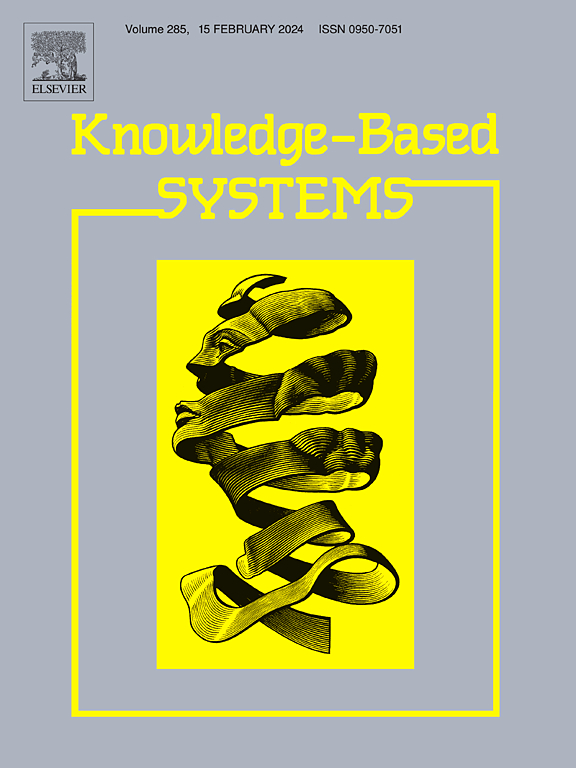基于定向洛比什的可解释特征工程模型与 TTPat 和 CWINCA,用于脑电图伪像分类
IF 7.2
1区 计算机科学
Q1 COMPUTER SCIENCE, ARTIFICIAL INTELLIGENCE
引用次数: 0
摘要
背景和目的脑电图(EEG)信号对于破译各种大脑活动至关重要。然而,这些脑电信号是微妙的,包含各种假象,而这些假象可能是由于各种原因造成的。本文的主要目的是开发一种可解释的新型机器学习模型,以识别这些伪像的原因。该数据集包含八个类别:七个是伪迹,一个是无伪迹的脑电信号。我们提出了一个新颖的特征工程模型,用于自动对这些伪像进行分类。该模型包含三个主要步骤(i) 使用提议的过渡表模式 (TTPat) 生成特征;(ii) 基于提议的累积权重迭代邻近成分分析 (CWINCA) 选择特征;(iii) 使用基于 t 算法的 k-nearest neighbors (tkNN) 进行分类。这项工作的新颖之处在于 TTPat 特征提取器和 CWINCA 特征选择器。使用提出的 TTPat 进行基于信道的转换,从转换后的脑电信号中提取 392 个特征。还提出了一种新颖的 CWINCA 特征选择器。结果在 30 个案例中,所提出的 TTPat 和基于 CWINCA 的特征工程模型获得了 66.39% 到 97.69% 的分类准确率。我们使用一种名为 Directed Lobish 的新符号语言展示了可解释的结果。结论结果和发现表明,所提出的可解释特征工程(EFE)模型在伪影检测和分类方面表现出色。为了获得可解释的结果,我们提出了一种新的符号语言 Directed Lobish。本文章由计算机程序翻译,如有差异,请以英文原文为准。
Directed Lobish-based explainable feature engineering model with TTPat and CWINCA for EEG artifact classification
Background and Objective
Electroencephalography (EEG) signals are crucial to decipher various brain activities. However, these EEG signals are subtle and contain various artifacts, which can happen due to various reasons. The main aim of this paper is to develop an explainable novel machine learning model that can identify the cause of these artifacts.
Material and method
A new EEG signal dataset was collected to classify various types of artifacts. This dataset contains eight classes: seven are artifacts, and one is the EEG signal without artifacts. A novel feature engineering model has been proposed to classify these artifact classes automatically. This model contains three main steps: (i) feature generation with the proposed transition table pattern (TTPat), (ii) the proposed cumulative weight-based iterative neighborhood component analysis (CWINCA)-based feature selection, and (iii) classification using t algorithm-based k-nearest neighbors (tkNN). The novelty of this work is TTPat feature extractor and CWINCA feature selector. Channel-based transformation is performed using the proposed TTPat, which extracts 392 features from the transformed EEG signal. A novel CWINCA feature selector is proposed. The artifacts are classified using tkNN algorithm.
Results
The proposed TTPat and CWINCA-based feature engineering model obtained a classification accuracy ranging from 66.39% to 97.69% for 30 cases. We presented the explainable results using a new symbolic language termed Directed Lobish.
Conclusions
The results and findings demonstrated that the proposed explainable feature engineering (EFE) model is good at artifact detection and classification. Directed Lobish has been presented to obtain explainable results and is a new symbolic language.
求助全文
通过发布文献求助,成功后即可免费获取论文全文。
去求助
来源期刊

Knowledge-Based Systems
工程技术-计算机:人工智能
CiteScore
14.80
自引率
12.50%
发文量
1245
审稿时长
7.8 months
期刊介绍:
Knowledge-Based Systems, an international and interdisciplinary journal in artificial intelligence, publishes original, innovative, and creative research results in the field. It focuses on knowledge-based and other artificial intelligence techniques-based systems. The journal aims to support human prediction and decision-making through data science and computation techniques, provide a balanced coverage of theory and practical study, and encourage the development and implementation of knowledge-based intelligence models, methods, systems, and software tools. Applications in business, government, education, engineering, and healthcare are emphasized.
 求助内容:
求助内容: 应助结果提醒方式:
应助结果提醒方式:


